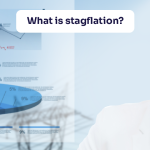When managing risk in any financial setting, especially when investing in the stock market, it’s important to anticipate potential challenges. One essential tool for assessing risk is stress testing. But how do you use it effectively? Stress testing allows you to see how your financial portfolio, including any positions on a trading platform in India, would perform under various unfavourable conditions.
Whether you are an experienced investor or just starting, understanding what stress testing is and how to apply it is key to ensuring that your investments are well-protected. This blog will help you understand the steps of using stress testing in your risk management strategy while ensuring your portfolio is built to withstand financial shocks.
To grasp the concept of stress testing, it’s essential to look at what stress testing really means. Simply put, stress testing is a method used to evaluate how certain scenarios—typically extreme or unlikely—might impact a financial system, portfolio, or institution. In the context of investing in the Indian stock market, stress testing can show you how your portfolio might perform under adverse conditions, such as economic recessions, market crashes, or inflation spikes.
Think of stress testing as giving your investments a health check. By running a series of hypothetical scenarios, you can see how your assets would respond under pressure. Stress testing in risk management is not about predicting the future but about preparing for it by assessing the potential vulnerabilities in your investment approach.
The use of stress testing in risk management cannot be overstated. It offers valuable insights that help investors, financial institutions, and regulatory bodies understand the resilience of a portfolio or system. This type of testing helps investors in trading platforms in India identify potential weaknesses in their investment strategies before real-world events expose them.
For example, if you are heavily invested in a particular sector or stock, stress testing can reveal how those assets would behave in an economic downturn. This knowledge is crucial in adjusting your portfolio to minimise potential losses and make more informed decisions when investing in the stock market.
Once you understand the stress testing meaning and its role in risk management, the next step is to apply it to your investment strategy. Here’s how you can get started:
The first step in stress testing is identifying the specific scenarios you want to evaluate. These could range from market crashes to interest rate hikes or even geopolitical risks. Each scenario should represent a significant threat to your investments. You can use historical data, such as the 2008 financial crisis, as a reference point for creating these scenarios.
For instance, if you’re investing in the stock market through a trading platform in India, you could test how your portfolio would perform in the event of a sharp economic downturn or a significant policy change by the government. The goal is to cover a diverse range of scenarios that would give you a complete picture of the risks involved.
One of the benefits of stress testing in risk management is that it can easily be applied across various asset classes. This includes equities, bonds, real estate, and commodities. By running stress tests on different asset types, you can see how each would react to adverse conditions and how they interact with one another.
For example, while your stock portfolio might take a hit in an economic recession, bonds may perform relatively well. Understanding the workings of these principles will help you adjust your portfolio to balance all your risk and return more effectively.
Once you have defined your scenarios and applied them to different asset classes, it’s time to analyse the results. Stress testing will show how much value your portfolio could lose under each scenario, allowing you to evaluate whether your current asset allocation is too risky.
For example, suppose you run a stress test and find that your portfolio loses a significant portion of its value during a market crash. In that case, you may want to consider diversifying into less volatile assets. If you are using a trading platform in India, you can use the insights from the stress test to make adjustments to your portfolio.
Now that you’ve assessed the impact of various stress scenarios on your portfolio, you can use this information to refine your risk management strategy. The primary goal of stress testing in risk management is to make proactive changes that limit your exposure to potential losses.
This may involve diversifying your investments, using stop-loss orders, or adjusting your leverage. The results from stress testing will guide you in making decisions that ensure your portfolio is resilient against market volatility. For instance, if the stress test shows that your portfolio is too reliant on high-risk stocks, you may choose to shift a portion of your assets to safer investments.
The market environment is constantly evolving, so it’s important to update your stress testing scenarios regularly. What might have been a relevant stress test a few years ago may not apply to the current market conditions. As you continue investing in the stock market and using a trading platform in India, make sure to revisit your stress tests to account for new risks and changing economic factors.
Stress testing is a critical tool in managing risks that are associated with investing in the volatile stock market. By simulating adverse scenarios and analysing how your portfolio would respond, you can identify potential weaknesses and make necessary adjustments to protect your investments. Whether you’re a seasoned investor or beginning your journey, incorporating stress testing in risk management will help you safeguard your financial future.

Revisiting the Gold-Silver Ratio Amid Silver's Outperformance
4 min Read Dec 22, 2025
Midcaps: Sweet Spot or Danger Zone? | What HSBC MF’s Cheenu Gupta Thinks | Ventura Spotlight
4 min Read Dec 17, 2025
Understanding Option Pin risk near expiry
4 min Read Dec 12, 2025
EPS in the Stock Market
4 min Read Dec 12, 2025
What is stagflation?
4 min Read Dec 10, 2025